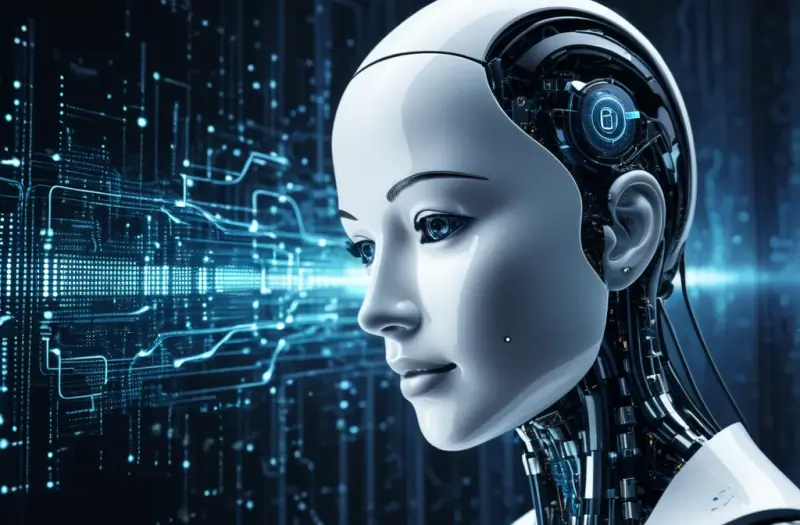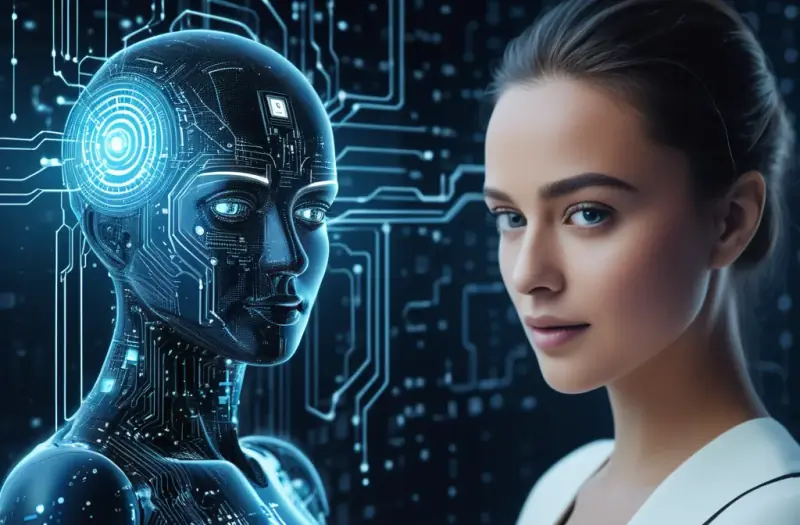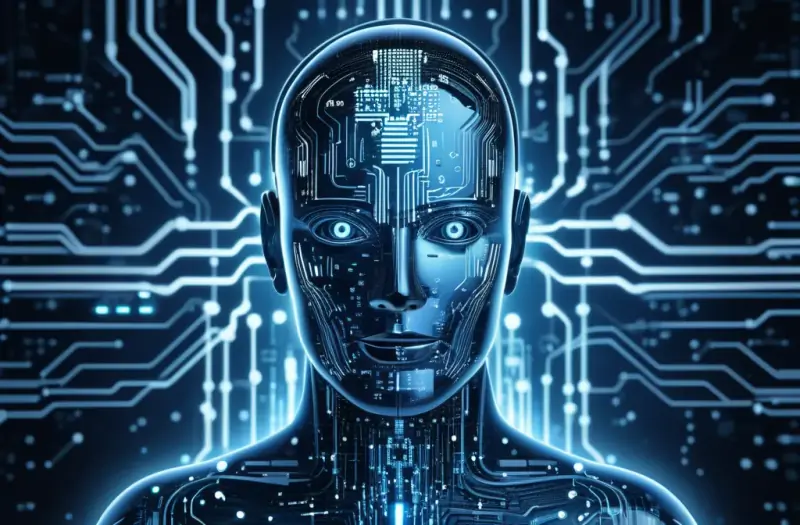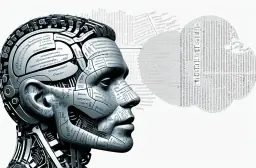Deep Learning: AI's Power Unleashed

Table of Contents
In the ever-evolving world of technology, deep learning has emerged as a groundbreaking force, pushing the boundaries of what artificial intelligence (AI) can achieve. This powerful subset of machine learning is revolutionizing industries across the globe, from healthcare to entertainment. But how exactly does deep learning work, and why has it become such a game-changer?
As we dive deeper into the concepts of deep learning and artificial neural networks, it becomes clear that we’re witnessing the future of AI. Let’s explore how this transformative technology works and how it is unlocking new possibilities in AI-powered systems.
What is Deep Learning?
Deep learning is a subset of machine learning that utilizes artificial neural networks with multiple layers, allowing computers to mimic human-like learning. Unlike traditional AI models, which require explicit instructions, deep learning enables machines to learn from vast amounts of data, identify patterns, and make decisions on their own. In simpler terms, deep learning empowers machines to learn and evolve without human intervention.
By leveraging neural network layers, deep learning models can analyze and interpret complex data, such as images, speech, and text. These models are capable of making decisions based on previous experiences, thanks to their ability to process information hierarchically. The more data deep neural networks are exposed to, the smarter and more accurate they become.
One of the reasons deep learning has gained immense popularity is its ability to excel at pattern recognition. This is essential in areas like image classification, natural language processing (NLP), and even self-driving cars. We can now build data-driven models that are more efficient and accurate than ever before.
How Do Artificial Neural Networks Work?

At the core of deep learning lies the artificial neural network (ANN), a computational model inspired by the human brain’s structure. Just as neurons in the brain process information, ANNs use interconnected nodes or “neurons” to process and interpret data.
Key Components of Artificial Neural Networks:
- Input Layer: This is where the data enters the network. Each node represents a feature or attribute of the data.
- Hidden Layers: These layers are where most of the computation happens. The network analyzes the data, applying complex mathematical transformations to extract patterns.
- Output Layer: The final layer provides the network’s prediction or decision based on the input data.
Each connection between nodes has an associated weight, which gets adjusted during training through a process known as neural network training. The goal is to minimize the error between the predicted output and the actual result, allowing the network to make more accurate predictions over time.
Deep neural networks consist of multiple hidden layers, enabling them to solve more complex problems than traditional machine learning models. This layered approach allows for hierarchical learning, where each layer builds upon the features learned by the previous layer.
Types of Learning in Deep Learning
Deep learning models can learn in various ways, depending on the type of task they’re designed to solve. The three main types of learning include:
Supervised Learning
In supervised learning, the AI model is trained on labeled data. This means that the model is provided with input-output pairs, allowing it to learn the relationship between the data and the correct outcome. The goal of supervised learning is to make accurate predictions for unseen data based on past examples.
- Example: Image classification, where the model learns to differentiate between various objects, such as cats and dogs, by being shown labeled images.
Unsupervised Learning
Unsupervised learning, on the other hand, works with unlabeled data. The AI model tries to find hidden patterns or relationships within the data without explicit instructions. This type of learning is often used in tasks like clustering and dimensionality reduction.
- Example: Customer segmentation in marketing, where unsupervised learning helps group customers based on their behavior without any predefined categories.
Reinforcement Learning
Reinforcement learning is a type of machine learning where the model learns by interacting with its environment and receiving feedback in the form of rewards or penalties. Over time, the model learns to take actions that maximize its cumulative rewards.
- Example: Self-driving cars use deep reinforcement learning to navigate roads, learning from their experiences in real-time.
Neural Network Training and Optimization

Training a deep neural network requires a vast amount of data and computational power. The process involves feeding data through the network and adjusting the weights of the connections between neurons. This is done using optimization algorithms, such as gradient descent, which help minimize the error in the network’s predictions.
The more layers a neural network has, the more complex the patterns it can recognize. However, training deep networks can be challenging due to issues like overfitting and the vanishing gradient problem, where gradients become too small to effectively update the weights. To overcome these challenges, researchers use techniques such as regularization, dropout, and advanced optimizers like Adam.
Neural computation is at the heart of this training process, and with advancements in hardware (such as GPUs), we can now train deeper networks more efficiently. This has led to remarkable progress in areas like speech recognition, facial recognition, and even algorithmic intelligence for automated decision-making.
Real-World Applications of Deep Learning in Singapore
In Singapore, deep learning is making waves across various sectors. From healthcare to finance, AI-powered systems are transforming traditional processes and offering innovative solutions to complex problems.
Healthcare
In the medical field, deep learning is being used to analyze medical images, enabling doctors to diagnose diseases like cancer more accurately. AI algorithms are also assisting in drug discovery, speeding up the process of finding new treatments.
Finance
In the financial industry, deep learning is used for fraud detection, risk assessment, and automated trading. By analyzing vast amounts of financial data, AI models can detect anomalies and predict market trends with greater accuracy.
Smart Cities
Singapore’s smart city initiatives leverage deep learning for surveillance, traffic management, and infrastructure planning. AI-driven models help in real-time decision-making, improving the overall efficiency of urban management.
FAQs
What is the difference between deep learning and machine learning?
While both deep learning and machine learning fall under the broader umbrella of AI, deep learning is a subset of machine learning that focuses on using artificial neural networks with multiple layers to analyze complex data. Traditional machine learning models require more manual feature extraction, while deep learning models learn features automatically from the data.
How are neural networks trained?
Neural networks are trained through a process called neural network training, where data is passed through the network, and the weights of the connections between neurons are adjusted to minimize error. This process is repeated until the model achieves the desired accuracy.
What are the main challenges in training deep neural networks?
Training deep neural networks can be difficult due to issues like overfitting, where the model performs well on training data but fails to generalize to new data. Another challenge is the vanishing gradient problem, which can prevent effective weight updates in deep networks. However, advancements in optimization techniques and hardware have helped mitigate these challenges.
Conclusion
Deep learning is undoubtedly unlocking the hidden potential of artificial intelligence. From neural network layers to reinforcement learning, the technology is reshaping industries and opening doors to new possibilities. With its ability to learn from data and make intelligent decisions, deep learning is set to revolutionize the way we live and work.
As Singapore continues to embrace AI-driven innovations, the future looks promising, with deep learning paving the way for automated decision-making and cognitive computing in every sector.
Key Takeaways
- Deep learning uses artificial neural networks to analyze data and make intelligent decisions.
- There are three main types of learning: supervised learning, unsupervised learning, and reinforcement learning.
- Neural network training involves adjusting the weights of connections between neurons to minimize error.
- In Singapore, deep learning is transforming sectors like healthcare, finance, and smart cities.
- With its ability to unlock complex patterns in data, deep learning is shaping the future of AI.
Deep learning is not just a technological advancement; it is a movement that is driving the evolution of AI. By harnessing its power, we can unlock a smarter, more efficient world.
ADS SPACE HERE

